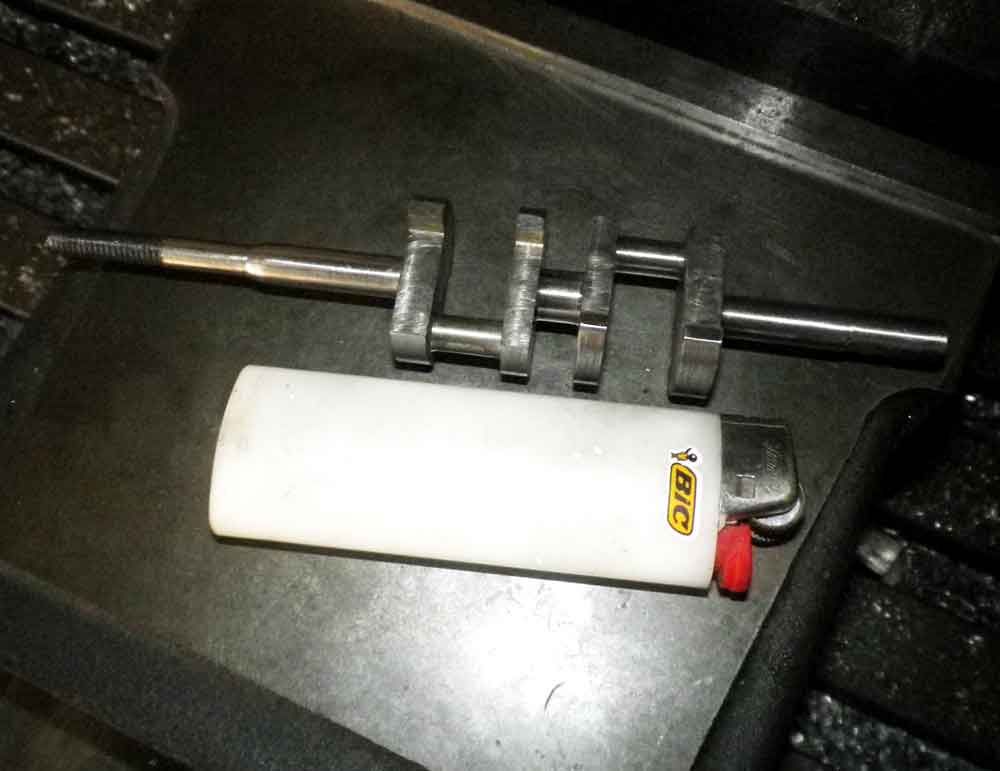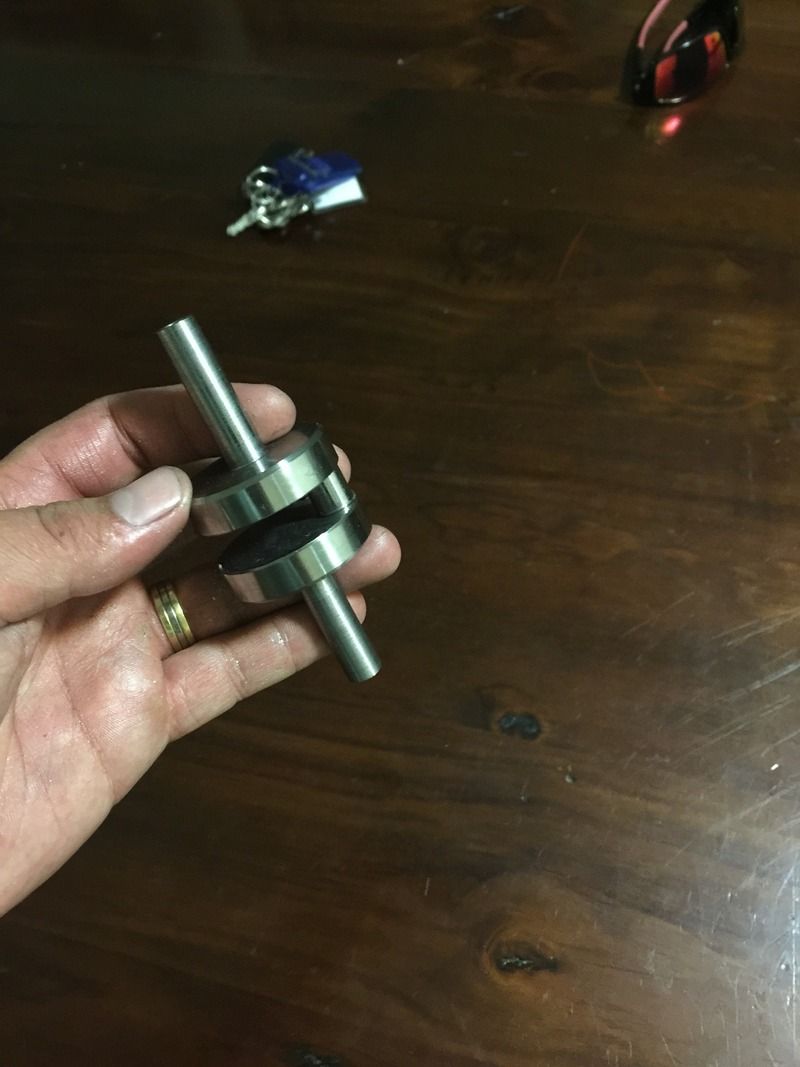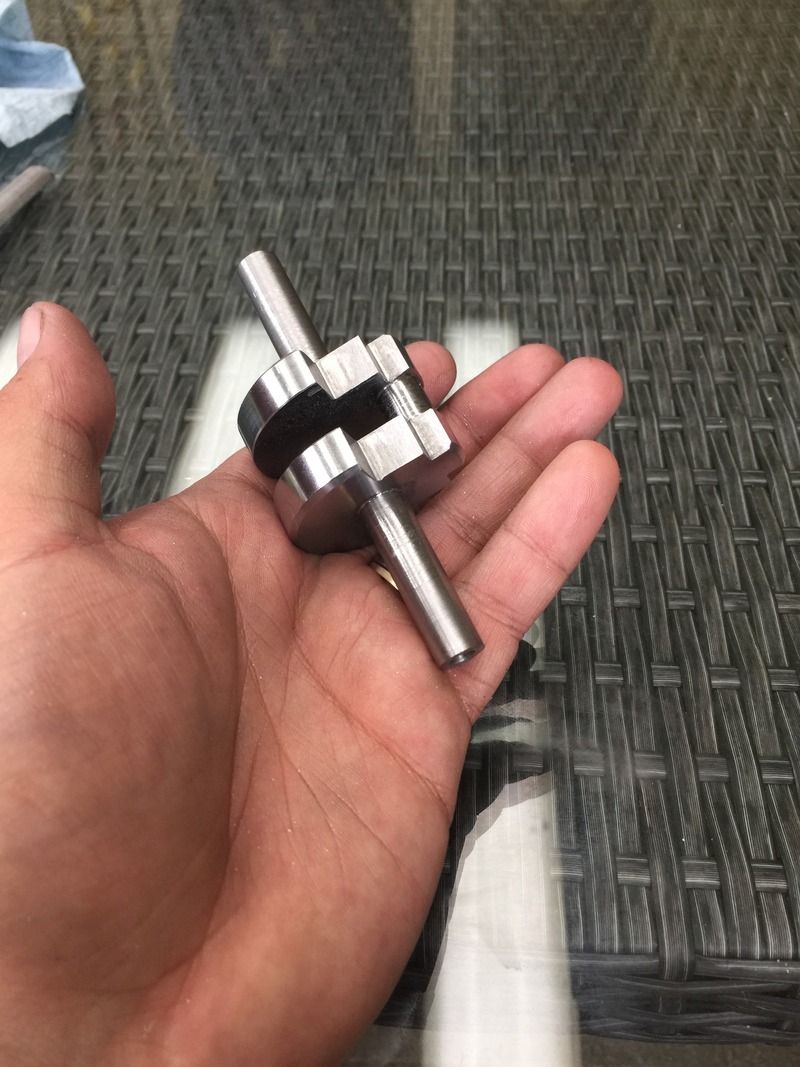- Joined
- Dec 9, 2015
- Messages
- 327
- Reaction score
- 349
Gday all
I was wondering how well this type of steel machines. I will mill out the majority of material for the crank throw and finish it up on a four jaw on the lathe.
My understanding with different steels is that a stress proof steel is desired with making crankshafts. Please correct me if I'm wrong, but is the reason for this because if steels with internal stressors are used, the machining process can cause the part to distort?
How does the 4140 perform with regards to this? What does the term peeled and polished actually refer to with regards to 4140 rod?
Thank you all
Andy
I was wondering how well this type of steel machines. I will mill out the majority of material for the crank throw and finish it up on a four jaw on the lathe.
My understanding with different steels is that a stress proof steel is desired with making crankshafts. Please correct me if I'm wrong, but is the reason for this because if steels with internal stressors are used, the machining process can cause the part to distort?
How does the 4140 perform with regards to this? What does the term peeled and polished actually refer to with regards to 4140 rod?
Thank you all
Andy











